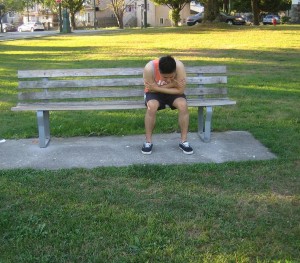A stroke transpires once a blood clot disrupts the flow of blood to a region of the brain or a blood vessel in the brain ruptures and blood could not flow to certain regions of the brain. In case oxygenated blood does not reach the brain, the brain cells start to die and results to lasting brain damage.
A stroke can cause brief or lasting disability depending on the severity of the stroke and time span in which the blood flow was disrupted to the brain. Remember that the key when dealing with stroke is to reduce brain damage. Once you recognize the indications and immediate treatment is sought, the better the chances of recovery as well as avoiding significant damage to the brain or disability.
Indications
Abrupt weakness or numbness in the arms, face or legs is a classic indication of stroke, particularly if weakness occurs on only one side of the body. The individual notices that only one side of the face droops and there is difficulty lifting or raising one arm when both are raised. Depending on the severity, there might also be paralysis on one side of the body.
Abrupt confusion

A stroke can trigger abrupt confusion especially while talking or working on a computer. There is sudden difficulty in thinking, speaking or understanding speech.
Abrupt balance loss
Due to the weakening on one side of the body, the individual has difficulty walking, loss of coordination or balance or dizziness.
Visual problems
Loss of vision or difficulty seeing in one or both eyes is an indication. The individual might lose vision entirely or suffer from double or blurry vision.
Abrupt onset of a headache
If an intense headache occurs abruptly without any known cause, it might be a stroke. Take note that this headache can occur along with dizziness or vomiting.
What is FAST action?
When experiencing a stroke, the individual can experience one or several symptoms. The symptoms can slowly develop over hours or days. If the individual has a mini-stroke or transient ischemic attack, the symptoms are brief and typically improve within 1-2 hours. In such instances, most believe that they are due to a migraine, stress or nerve issues.
If an individual was taken to the hospital within 3 hours of onset of the initial symptoms, the doctor might provide a medication that dissolves the blood clots and restore the flow of blood to the brain. Fast action improves the chances of recovery after a stroke as well as reduce the severity of disability.
The FAST test can be used to identify a stroke:
- F (face) – instruct the individual to smile and check for indications of drooping on one side.
- A (arms) – instruct the individual to raise his/her arms and check for downward drifting on one side
- S (speech) – instruct the individual to repeat a phrase without slurring
- T (time) – call for immediate emergency assistance if an individual has indications of a stroke
